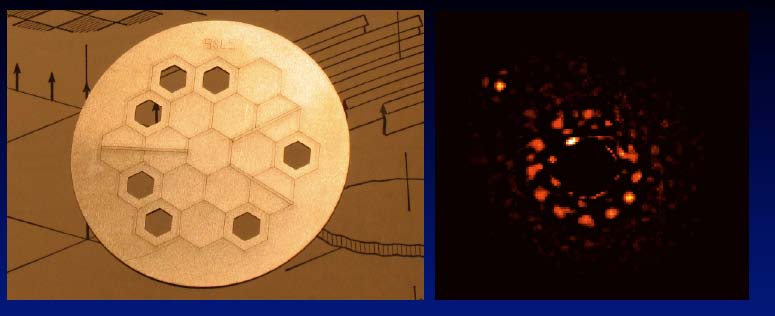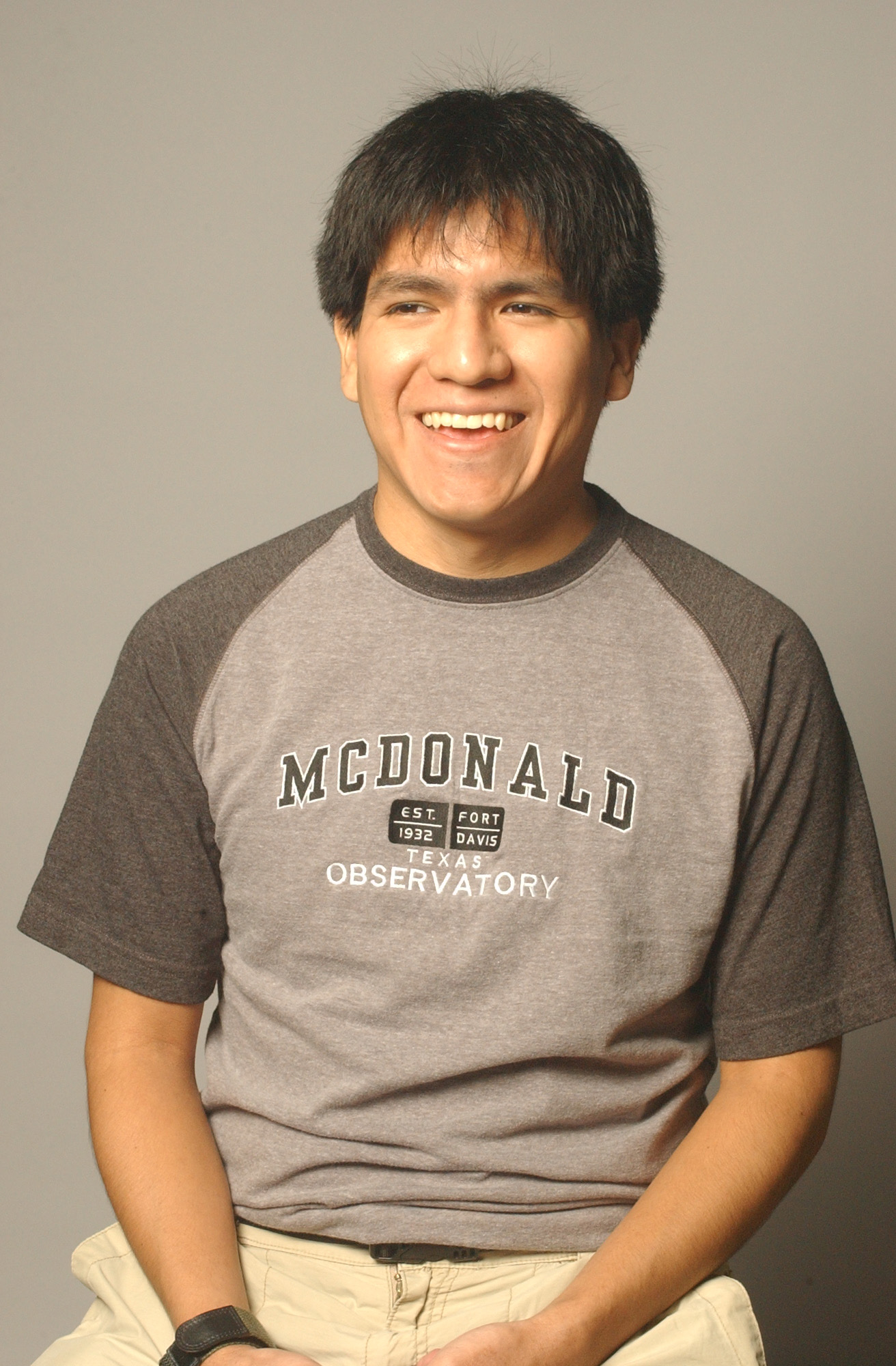for additional information on each Fellow's project, please click on the project title


Detection and Characterization of Planets Around the Lowest-Mass Stars
Jacob Bean grew up in Chatsworth, Georgia and is 29 years old. Since receiving his Ph.D. at the University of Texas, Austin, in 2007, he has been a postdoc at the Institute for Astrophysics in the Georg-August-Universitaet in Goettingen, Germany. He currently has a Marie Curie Fellowship.
His Sagan project is to carry out a sensitive search for planets around the lowest-mass stars (i.e. stars with masses less than 20% the mass of the Sun). He is using a method of measuring high-precision (better than 10 m/s) radial velocities for these stars that he has recently developed to carry out this search.
The lowest-mass stars are the most numerous stars in the Galaxy, but we still don't know very much about the nature of their planetary systems. The main reason for this is that the stars are very faint at visible wavelengths, so it is difficult to get high-precision radial velocity measurements for them. Jacob's method is to measure radial velocities of these stars at near-infrared wavelengths, which is a region where they are much brighter and, thus, much more amendable for study. This isn't a new idea, but Bean's breakthrough has been to develop a type of gas cell that can be used for calibrating instruments at near-infrared wavelengths and enable high-precision measurements. This new technique enables us for the first time to search for planets around a large number of the very lowest-mass stars with a sensitivity to detect planets down to Super-Earth masses in the stars' habitable zones.

The First Stages of Planet Formation
Aaron, 29, received his Ph.D. in astrophysics from Indiana University in 2007. He spent two years as a postdoc working at the University of Zurich, Switzerland, with the computational astrophysics group. In October of 2009, he joined the Astronomy Department at the University of Florida as a Theory Postdoctoral Fellow.
Aaron was born in Toronto, Ontario, and grew up in Akron, Ohio. His career in astrophysics started as a participant in the Research Experience for Undergraduates program in Socorro, NM. In graduate school, he became interested in radiation hydrodynamics and computational astrophysics, and was awarded a NASA Graduate Student Researchers Program Fellowship to complete his dissertation work on simulating protoplanetary disks.
Protoplanetary disks are systems with rich physics. They are susceptible to multiple instabilities, which along with the influence of their environment, cause disks to change over time. It is in these evolving disks that planetary systems are born. As a Sagan Fellow, Aaron will use three-dimensional radiation hydrodynamics+dust simulations to model the earliest stages of disk evolution to help us understand when and where in protoplanetary disks planet formation begins. Models for the earliest phases of disk evolution are crucial to our understanding of the diversity of observed planetary systems and of the robustness of the planet formation process.


Witnessing Planet Formation in Circumstellar Transition Disks
Lucas Cieza received his Ph.D. from the University of Texas at Austin in 2007. Since then, he has been a Spitzer Fellow at the University of Hawaii at Manoa. He is 31 years old and was raised in Quilmes city, just south of Buenos Aires, Argentina.
Lucas became interested in Astronomy at an early age, reading popular science books such as Carl Sagan's Cosmos while still in elementary school. He chose his current research field, protoplanetary disks and planet formation, while working for the Spitzer Legacy project "From Molecular Cores to Planet-forming Disks" in graduate school.
During his Sagan Fellowship, Lucas will perform a multi-wavelength study of circumstellar disks with evidence for ongoing planet formation, the so called "transition" disks. He plans to obtain infrared spectroscopy with the Herschel Space Telescope and the Keck telescope to investigate the content and distribution of gas in the planet-forming regions of the disks. He will also use the Submillimeter Array (SMA) and the Atacama Large Millimeter Array (ALMA) to obtain very high resolution images of transition disks. His goal is to better constrain the conditions in which planets are formed and help to distinguish between competing planet formation theories.


Laurent was born 30 years ago. He grew up in rural France commuting back and forth between his small village southeast of Toulouse and various boarding schools. He obtained his doctorate degree from Princeton University in 2008. At Princeton he was the recipient of both the Daniel and Florence Guggeheim and Harari Fellowships.
As to what inspired him to become an astronomer, Laurent says "When I received a perfect grade on my first high school science project about stellar evolution, I knew I was bound to be an astronomer. When Fernando Padilla, my sophomore physics instructor, helped me reconcile my desire to solve problems from the fundamentals, with equations a pencil and paper, with my natural instinct for "fixing the thing," I knew that what I would enjoy most was experimental physics. When Professor Kasdin at Princeton challenged me to work on novel imaging techniques to detect and characterize exo-planets, I did not hesitate, jumped in and found my career path."
Laurent's ultimate goal is to develop new direct-imaging techniques and carry out observations that will further populate the planetary-systems life chart. As a Sagan fellow, he will use the Gemini Planet Imager (GPI) instrument in conjunction with the Non Redundant aperture Masking technique (NRM). He will also pursue his current work developing Adaptive Optics and corona graphic technologies for both the next generation of Extremely Large Telescopes and future space missions.


Ivan received his Ph.D. in May 2008 from the University of Texas at Austin. Recently, he has been working at the Max Planck Institute for Astrophysics in Germany. He is 31 years old and grew up in Lima, Peru.
Ivan became interested in his research topic after it was found that a peculiarity in the chemical composition of the Sun could be attributed to the formation of terrestrial planets in the Solar System. He was fascinated by the possibility of finding extrasolar Earth-like planets using relatively simple chemical composition analysis of stars.
Terrestrial planets like Earth are made of rocky elements. During the formation of the Solar System, these rocky elements were retained by the terrestrial planets but volatile elements ended up being accreted by the Sun. Interestingly, our star exhibits a deficiency of rocky elements compared to volatiles, thus suggesting that the formation of terrestrial planets in the Solar System has left a signature imprinted in the chemical composition of their host star, the Sun. This signature can be easily detected in the Sun but also in distant stars using high resolution spectroscopy.
Ivan will look for the signature of terrestrial planet formation in the chemical composition of stars that are more metal-rich and warmer than the Sun. In both cases, the terrestrial planet signature hypothesis makes very specific and testable predictions. If confirmed, elemental abundance analysis could be used to search for large numbers of the still elusive extrasolar terrestrial planets.


Investigating Hot Jupiter Atmospheric Variability with Three-Dimensional Modeling
Emily will receive her Ph.D. from Columbia University in June 2010. She grew up in Berkeley, CA and is 26 years old.
Emily began graduate school thinking that she was not very interested in extrasolar planets; but the more she learned, the more hooked she became. We are finding planets so very different from anything in our Solar System and Emily is intrigued by their unusual and unexpected properties. It's a big challenge--and a lot of fun--to figure out how to understand these exotic planets.
Hot Jupiters exist in an atmospheric regime unlike anything in our Solar System and present an exciting opportunity to extend the field of dynamic meteorology to encompass these new planets. The steady influx of newly discovered planets and the push toward atmospheric characterization has revealed many system-to-system differences and mounting evidence for significant weather variability. Emily will use her relatively simple three-dimensional code to thoroughly investigate the atmospheric conditions necessary to achieve large scale atmospheric variability. Observational constraints on variability can then provide further insight into the underlying nature of the atmosphere (e.g., the static stability or the strength of horizontal temperature contrasts). This study will also result in the first systematic modeling survey of hot Jupiter diversity, providing a useful framework for the increasing variety in newly discovered systems.


Super-Earths' Composition and Evolution
Diana Valencia received her Ph.D. from the Earth and Planetary Sciences Department at Harvard University in June 2008. She then worked as a Poincaré Postdoctoral Fellow at the Observatoire de la Côthe d'Azur.
Her research comprises the internal structure, composition, and physical evolution of super-Earths. These are the newest type of exoplanets and are devoid of massive atmospheres. They are exciting objects, as they resemble the terrestrial planets and icy satellites, while their mass range is foreign to the Solar System experience. Thus, they offer a new parameter space for comparative planetology and extraordinarily, some of them may have habitable conditions.
To characterize these objects, Diana will interpret the mass-radius pair measurements that are now arriving for these planets and infer their composition and structure. Furthermore, through theoretical work her goal is to understand the interior dynamics of terrestrial super-Earths and establish existing connections to atmospheric composition.